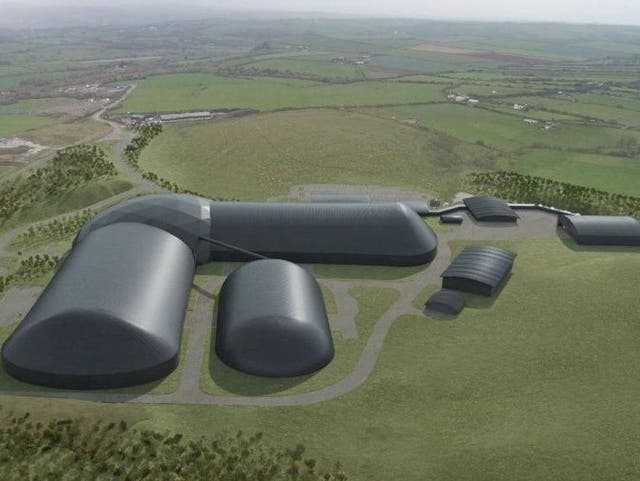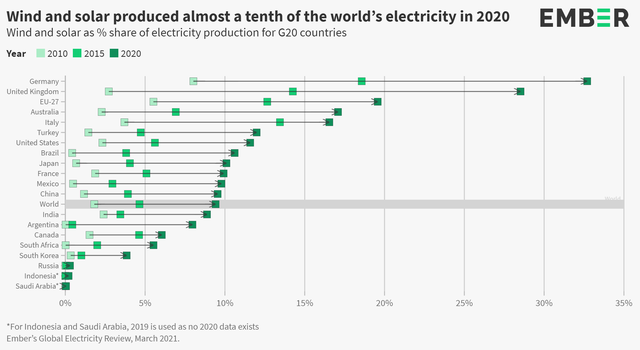
The world’s population is growing steadily, and with it the demand for raw materials and resources. But all too often these are not infinite and are slowly becoming scarce. Our consumption ensures that we gradually exceed the capacities and limits of our planet.
The circular economy is intended to help save resources and pave the way out of the vicious circle of the throwaway society. The idea is quite simple: existing materials and products are shared, borrowed, reused, repaired, refurbished, and recycled for as long as possible to extend the life of the raw materials used before they finally reach the end of their useful life.
Thus, waste generated is kept to a minimum as all components are kept in circulation in the economy for as long as possible.
Sustainable investments have peaked at $30 trillion globally – a 68 percent increase since 2014. Quite a few financiers have committed to climate neutrality goals and expect the same from their business partners
The circular economy not only helps to operate more sustainably, but it also reduces the threat to the environment, increases security of supply and has a positive impact on our climate.
For many companies, the transformation towards more sustainability and climate neutrality also has financial reasons. It has been noted on several occasions that sustainable products grow significantly faster and enjoy greater popularity than non-sustainable products.
Unilever, for example, stated that its sustainable brands grew a full 46 percent faster than others, accounting for 70 percent of the company’s sales growth. In addition, McKinsey has found that a focus on environmental, social, and governmental goals can significantly reduce rising operating costs for raw materials or water, for example.
Investors are also increasingly looking for forward-looking and innovative companies. Sustainable investments have peaked at $30 trillion globally – a 68 percent increase since 2014. Quite a few financiers have committed to climate neutrality goals and expect the same from their business partners.
The pressure on companies to operate in a climate-neutral manner and to advance measures such as the circular economy is therefore coming from all sides.
The urgency for a circular economy is growing

From returnable bottles to car sharing, consumers have had a growing range of options for living more sustainably for some time now. Half of Germans are willing to buy refurbished devices, according to the latest Bitkom study.
As demand for more sustainable products continues to grow, online retailers are also following suit by increasingly contributing to and sourcing from the circular economy as well. According to a consumer study by Mirakl, more than half of online shoppers surveyed are more likely to choose vendors with sustainable practices.
In addition to consumer goods, many B2B industries are also embracing the circular economy
In addition to consumer goods, many B2B industries are also embracing the circular economy. In the automotive industry, for example, the use of remanufactured parts creates tremendous environmental and economic benefits for insurance companies, auto body builders and car manufacturers.
According to an analysis by the VDI, remanufacturing a compressor saves 89 percent CO2 equivalents compared to new production. Procurement costs are also 40 to 70 percent lower, which also benefits insurance companies because they have to pay lower sums in the event of damage.
The automotive sector can become a pioneer of the circular economy

Aniel, a leading French B2B retailer of car body parts, has recognised the signs of the times. The company recently expanded the offering of its online marketplace, which already lists more than 65 million listings for over 15 million products, to include remanufactured body parts.
By centralising its product offering, Aniel is making it easier for its customers to access remanufactured products for which they would otherwise have had to search laboriously and time-consumingly for specialised third-party suppliers.
This significant expansion of the product offering in the marketplace has enabled Aniel to strengthen its positioning as a “one-stop store” for bodybuilders and automotive manufacturers.
The potential benefits of the marketplace model are enormous and can help a company become more agile, larger and more profitable. According to Mirakl’s new Enterprise Marketplace Index 2022, revenue growth in enterprise marketplaces is more than double that of e-commerce overall – for the second year in a row.
Online marketplaces like Zureli have the advantage of providing a large and centralised catalogue of offerings right in one place, helping to establish a resource-efficient approach to supporting the circular economy
When developing a marketplace strategy, B2B companies should focus on specialisation because they know their own ecosystem best, and customers rely on enterprise expertise.
Online marketplaces have the advantage of providing a large and centralised catalogue of offerings right in one place, helping to establish a resource-efficient approach to supporting the circular economy.
On average, an auto body shop serves more than 30 vehicle brands and thus receives supplies from dozens of different suppliers, including specialised dealers, from multiple locations. By centralising purchases and accessing a wide range of products, Aniel’s marketplace model saves shops a lot of time.
Continuous innovative thinking allows Aniel to strengthen the circularity of the automotive sector, secure the supply of spare parts and meet the challenge of internationalisation.
What’s next in terms of sustainability
Environmental awareness within companies is growing, and the sustainability of products is playing an increasingly important role. This includes optimised supply chains, sustainable materials, and fair working conditions. 86 percent of consumers even think that increased sustainable action can give B2B companies a decisive competitive advantage.
But there is still a lot of catching up to do when it comes to sustainability, both for consumers and for companies. While interest in sustainable products is growing, understanding of how the circular economy works still needs to improve. Only then can benefits be truly understood and changes implemented.
Through transparency, companies can demonstrate that the sustainability mindset is present and being advanced. The marketplace model provides a good foundation for the circular economy through its interconnectivity and numerous sales and comparison options, but companies must be willing to rethink their current concepts and processes. Only then can the circular economy become a reality.
Source Circular













